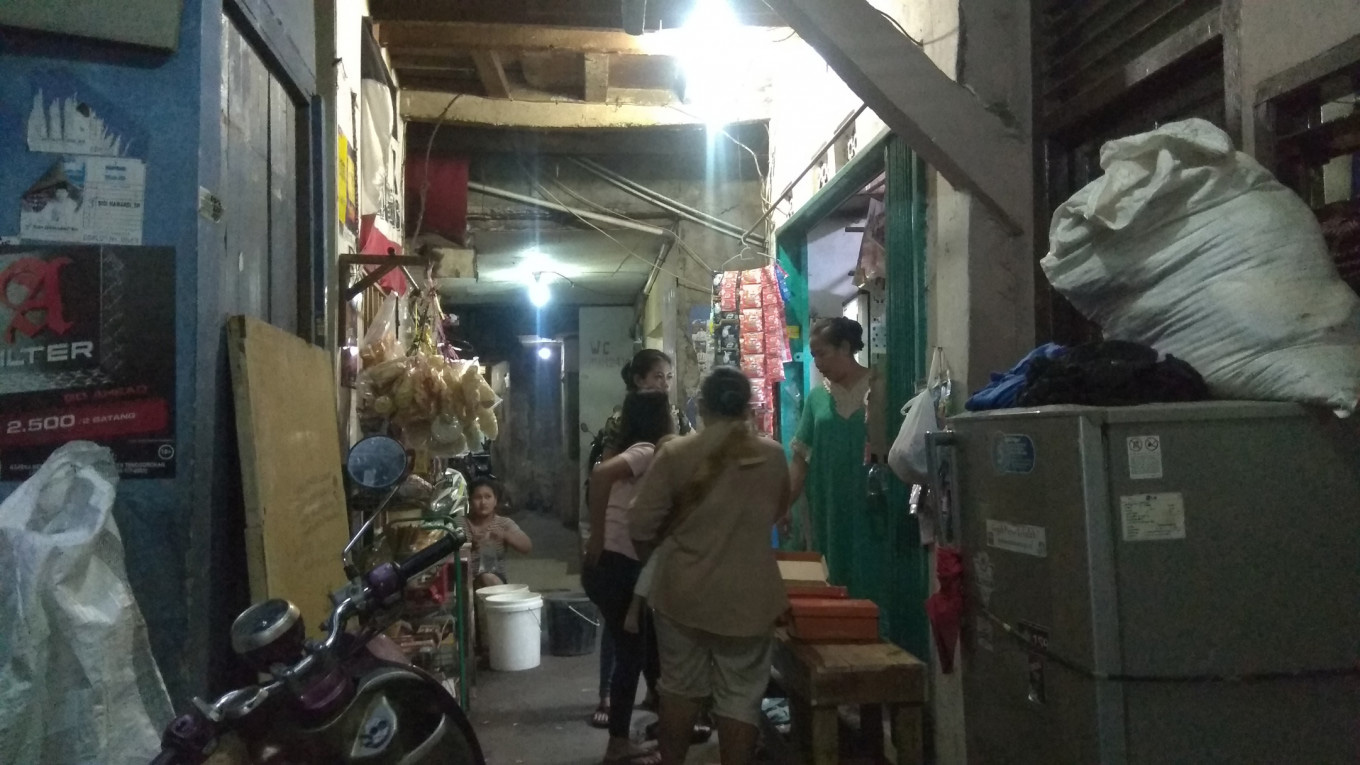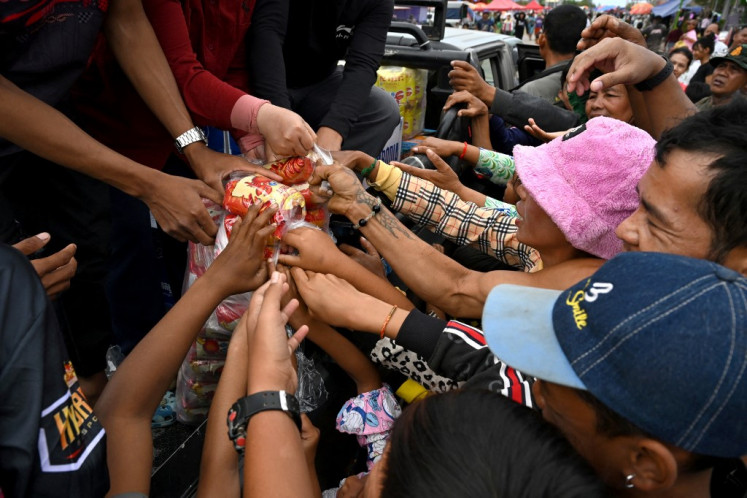Popular Reads
Top Results
Can't find what you're looking for?
View all search resultsPopular Reads
Top Results
Can't find what you're looking for?
View all search resultsReducing poverty, one experiment at a time
Change text size
Gift Premium Articles
to Anyone
E
fforts toward the eradication of poverty typically comprise difficult choices about where to allocate limited resources and are filled with questions about the most effective interventions to achieve the intended results.
For decades, hefty investments were made through development aid programs that were often designed on assumptions and on what seemed to be commonsense interventions. For example, it seems reasonable that cash handouts would improve the lives of poor families, or that free textbooks would improve the educational outcomes of students in poor rural areas. But with no clear evidence, we could not be absolutely sure which intervention was effective and which was not.
This approach of development program delivery began to shift with the emergence of an experimental approach toward poverty reduction introduced by economists Abhijit Banerjee, Esther Duflo and Michael Kremer. On Oct. 14, the trio received the 2019 Nobel Memorial Prize in Economic Sciences for their groundbreaking work over the past 20 years.
This experimental approach to poverty reduction means that instead of making assumptions on the benefits of the intervention, you first test it, before implementing it on a larger scale.
To conduct such tests, the three developed a robust measurement framework utilizing randomized controlled trials or RCTs.
Using this approach, the impact of an intervention in the treatment group is compared to that of a control group which did not receive the intervention in order to find evidence about whether it was effective. The results of these RCTs have transformed policies in many countries, including India and Indonesia. In 2012, the Abdul Latif Jameel Poverty Action Lab (J-PAL) — an institution founded by Banerjee and Duflo in 2003 — partnered with Indonesia’s government to test and implement measures that would curb corruption in a rice distribution and subsidy program called Raskin.
The solution found to be most effective was an identity card with information about the amount of rice you are eligible to receive. Findings from this research set the groundwork for the government’s social protection card program in 2013, which informed over 15 million Indonesians about their entitled benefits.
The government has received praise following reports of the nation’s poverty rate falling to a single digit for the first time in history, to 9.82 percent in March 2018. However much more work is needed to achieve the Sustainable Development Goals (SDGs) by 2030.
As President Joko “Jokowi” Widodo’s second term begins, there are three key lessons from this year’s Nobel Economics Prize winners on decisions about which policies and programs to allocate limited resources towards.
First, when we conduct experiments, complex issues such as education quality and “poverty” are broken down into smaller, far more manageable questions. Instead of asking, “How can we improve the quality of education?” we instead ask questions such as “Is distributing free textbooks in schools effective in improving students’ grades?” This establishes concrete and comparable variables needed to measure direct impact.
Second, experiments allow us to assess and compare multiple potential interventions simultaneously. In improving the livelihoods of small business owners, for instance, is it access to capital or access to broader markets that will increase their sales and incomes more effectively?
Third, testing interventions in real-life settings prior to larger scale implementation allows for unexpected outcomes and provides an opportunity to learn many lessons. This can be extremely useful in tailoring interventions to suit the actual needs of communities, allocating resources efficiently and scaling up effective interventions based on real-life evidence.
However while more interventions should be rigorously tested for hard evidence of their effectiveness before large-scale, nation-wide roll out, because RCTs are expensive and complex to implement — this approach cannot be applied to every development intervention.
RCTs might run over two to three years with rigorous research processes. However, we can implement a complementary lean-experimentation model that sifts through and selects interventions that have potential for impact.
A lean experiment requires minimal resources and can be conducted quickly in as little as three to six months. This gives us the ability and agility to quickly learn whether a solution shows promise or not. This process can be complementary to the rigorous RCT process and can create a pipeline of potential solutions which can proceed to larger scale implementation and future RCTs.
We put this in action through an ongoing experiment with solar dryers to support smallholder farmers during the postharvest process. Traditional drying methods — which involve laying your crops on the ground under the sun — are inefficient and expose farmers’ yields to weather, contamination by dirt and pests, and results in a suboptimal quality product.
Our latest design tested in Sintang, West Kalimantan, shows that the solar dryer reduces the time required for drying by 20 percent.
In addition, the solar dryer combined with the introduction of simple fermentation boxes improved the beans significantly from Grade C to Grade A quality, meeting the required standards of buyers of quality cacao.
Lean-experimentation also led us to an unexpected insight during a 2016 small-scale intervention in Sumba, East Nusa Tenggara. The study, involving 40 female students, explored the link between access to reusable sanitary pads and school attendance.
While we didn’t find a significant link, we learned the pads have other environmental and health benefits, especially in remote locations with no waste management infrastructure. But the reusable pads were too expensive, and the high cost was preventing girls in rural Indonesia from using the products.
These results piqued the interest of key players in the water, sanitation and hygiene sector and led to a different and redesigned experiment with multiple partners to establish local production to reduce costs and conducting research on whether the lower-cost pads are more likely to be adopted at a larger scale.
The lean-experimentation approach, albeit based on small data, nonetheless generates and provides strong signals on which solutions are promising, and which are not, in real-life settings.
This approach can be helpful in the selection of potential interventions to solve a complex multidimensional issue such as poverty, which requires a toolbox of effective solutions that address different aspects of the problem.
As we congratulate the above economists, their Nobel Prize win highlights the important work of experimentation in finding and implementing solutions which are proven to improve the lives of poor communities in Indonesia and around the world.
Recently, Indonesia’s National Development Planning Agency estimated that Rp 7.64 trillion (US$540 billion) of funds are needed between 2020 and 2024 for initiatives towards achieving the SDGs.
Beginning with lean-experimentation, then testing promising solutions through RCTs, these funds can then be invested on interventions proven to be effective before being implemented as large-scale programs and policies. In doing this, the incoming second administration of President Jokowi may move closer towards achieving the SDGs.
***
Cofounder and CEO of Kopernik











